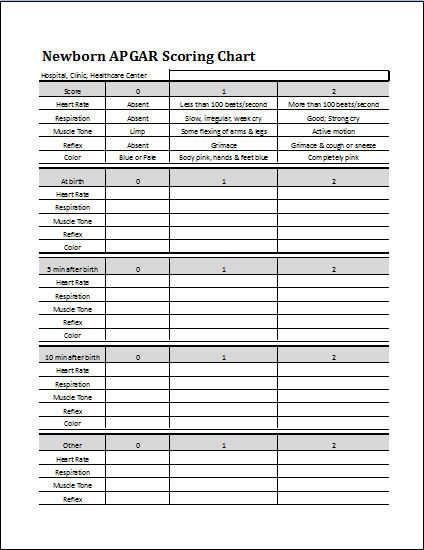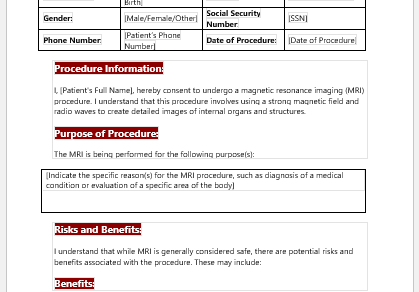A baby is assessed for its basic activity and general conditions immediately after birth. For this purpose, a scoring system called the APGAR scoring system was devised in the early 1950s of the previous century, making it easy for doctors and even the nursery to assess the general condition of the newborn and to make an in-time intervention in case of bad scoring.
What is an APGAR scoring system?
The APGAR scoring system, named after the doctor who devised it, is a set or table of certain conditions that are seen in newborns. If these are alright, the baby is given a maximum score; he is considered safe and cannot achieve a minimum desirable score. He may need further management and help breathing.
The process of birth is a stressful and painful one, not just for you but for the baby as well. As soon as the baby is born, the doctor performs some simple tests to evaluate if the baby has endured the process normally and is ready to enter the world or if special and intensive care is required to strengthen the baby.
In layman’s terms, these tests are just a physical examination of the vitals of the baby right after the birth and then again within the first few minutes. Technically, the test is known as the APGAR test. This test checks the following criteria:
- Appearance: A healthy child is pinkish, but if the appearance of the baby is blue, that means there is something wrong.
- Pulse: the normal pulse rate should be more than 100 beats per minute; if otherwise recorded, then that is another red flag.
- Grimace records how quickly and strongly the baby responded to foreign stimuli and cried.
- Activity: the baby should be moving limbs to show normal birth
- Respiration: if the cry of the baby is strong, then that means the respiratory system is normal.
Interpretation of APGAR scoring
After marking each category, we get the sum of these. The maximum score is 10 and is the main goal at the time of assessment.
- A score from 7 to 10 is considered normal
- An Apgar score between 4 and 7 means that the baby may need resuscitation. (This is the reason scoring is done at birth and then after five minutes again to assess the situation better.)
- A score between 0 and 4 is considered bad, and it indicates neonatal resuscitation and assisted breathing.
These tests are graded as per set criteria, and the baby’s score determines if the baby’s birth process was healthy and normal or if the baby might have developed a syndrome or condition that needs attention. If your baby’s score is not up to par, then further tests might be advised.
The chart that stores the above-mentioned detailed test scores and remarks is known as the newborn scoring chart.
APGAR scoring chart
An APGAR scoring chart is devised for the same purpose and helps in the quick evaluation of the baby. This form is significant from a medico-legal point of view as well. In case of any unfortunate event or death of the baby, this form helps in proving the initial condition of the baby and saves the doctor and hospital from gigantic lawsuits.
This form is filled out very carefully, giving accurate information about the identity of the baby and mother, mode of delivery, date and time of delivery, and his APGAR score at the time of birth and five minutes later.
At the end of the scoring, a pediatrician has to comment on the overall condition and the next possible steps to be taken.
The word APGAR consists of five categories, abbreviated. These are in the form of a table with the following description:
A for Activity or muscle tone
- 0 for no activity
- 1 for flexed arms and legs
- 2 for active baby
P for Pulse or heart rate
- 0 score for no pulse at all
- 1 for heart rate less than 100/min
- 2 for heart rate greater than 100/min
G for Grimace or response to any stimulus
- 0 for floppy or no response
- 1 facial response to stimulus
- 2 for Prompt response
A for Appearance or color of skin at birth
- 0 score for the blue color of the faces and extremities
- 1 for pink body and blue extremities
- 2 for pink body face hands and feet
R for Respiration or breathing
- 0 score for no breathing
- 1 for slow breathing, irregular breathing, or chest in drawing present
- 2 for fast, regular, and easy breathing
- Trackers for Medical Facilities
- Diabetes Management Plan Sheet for Students
- Claim Form for Health Insurance Policies
- Application Form for Accreditation of Hospital
- Doctor Workplace ID Card Templates
- Doctor Prescription Pads
- Health Assessment Form Template
- Baby Kick Counter Template
- Miscarriage Medical Certificate
- Personal Health Record Sheet
- Vaccine Storage Temperature Checker
- Travel Declaration Form for COVID-19
- Hospital Cleaning Log
- Pain Log Template
- Multiple Patient Vital Sign Flow Sheet



